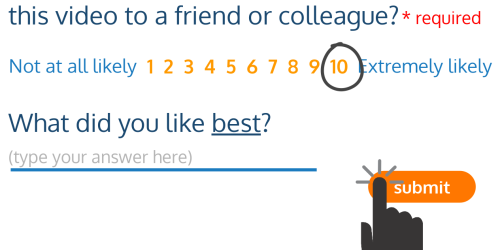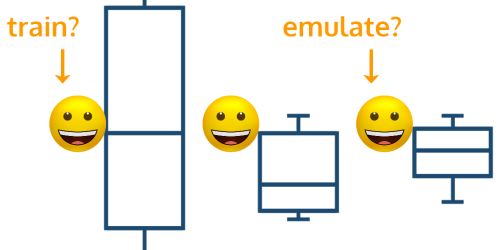Client Intake Forms
One of the primary tools of the client intake process is the intake form.
In this post, I talk about how to set up tools like your client intake forms to help make your client intake processes as simple and efficient as they need to be.
What is a client intake form?
Client intake forms go beyond the formality of collecting names and addresses. They’re a reflection of your other business processes and company brand personality.
From a process standpoint, intake forms are serving purposes beyond growing your contact list or getting answers. They’re:
- qualifying prospects into the best fit service,
- collecting the data on and about the prospect,
- introducing prospects to the types of questions you need to have answered, and
- introducing prospects to the experience of working with you, like giving a glimpse of what the next steps with you might look like.
Now, I say “form,” which is probably making you think of pieces of paper or computer screens used to collect information from people directly. But, really, an intake form is any template you use to collect standardized information or conduct a guided discussion, and set yourself up for a successful milestones and outcomes with this client.
Rather than a single form that does it all, you’ll probably have a series of these forms, or intake question steps, to get you all the way through the intake process.
Form examples include:
- the Contact Form or Get a Quote Form on your website, and
- the list of questions that you ask prospects so you can create a proposal.
What should a client intake form include?
So what should you include on an intake form, and when should that form be used in the intake process?
Addressing these questions is where you typically find yourself falling into the trap of introducing barriers in your efforts to remove barriers to working with you.
I’m going to touch on the two most common ways you might do this, and what you can do about them.
Barrier: Too Simple
The first barrier to look out for is making the intake form too simple.
There’s a perception that you want to make that first intake form, like the contact form or get a quote form on your website, as simple as possible so that you don’t lose prospects before you even knew they existed.
And it’s true that you shouldn’t collect information just because you’re curious, or because more data is better than less. You should have a business need for all of the data you collect and store.
So people strip the form down to
- Name,
- Contact information like email and phone number, and
- Maybe a short, generic open-ended description of why the lead is reaching out.
And yes, you need that information, but is that enough for you to get a sales conversation going?
If your next step after this simple form is to collect some more general information, which you then use just to schedule another call or fill out more forms or redirect the call, then you need to revisit the simplicity of this first intake form.
If you find yourself having a lot of calls with unqualified leads or “tire kickers,” that’s another indicator to revisit the simplicity of your intake forms, especially anything you could use as a qualifying question, so that your overall process can be made more efficient, and you can make the most of your time.
What additional fields should you consider?
A classic example of this is budget. Pricing can be something that you list elsewhere on your website, or only disclose later. But, if budget will directly inform your sales conversations in terms of customizing a solution, consider collecting budget ranges as part of this initial intake data so that that first conversation is as targeted as possible. Budget ranges can be pulled from historical sales data, and adjusted to allow for a little overlap with upsell opportunities.
Another example is scheduling that first meeting. In this case, you might consider using a scheduling tool like Calendly as part of this intake so that people can get themselves on your calendar immediately, without any back and forth about days and times.
How complex should an intake form be?
You don’t want to create and manage a whole bunch of different intake forms for different situations, especially when those forms would collect a lot of the same information. You also don’t want to force prospects to figure out which form they should be filling out.
The solution? Use a form tool that lets you do something called logical branching, that is, using the answer to one question to determine which question(s) the respondent sees next.
This option is particularly useful if you have well defined points at which a prospect’s answer to one question might direct them to other questions specific to that answer. This form will appear simple from the prospect’s perspective, but is complex enough to handle directing people through all of the initial questions you know you need to have answered.
An example of this would be events management. Your branching question could be something like, Will this event be fully in-person, fully remote and online, or a hybrid of the two? Then, only people who answer “remote” or “hybrid” would be shown questions about Zoom setup.
Do you need multiple intake forms?
If you’re still leery of scaring off prospects with a lengthier form, then consider adjusting this first part of your intake process to include multiple intake form steps.
Filling out the first “simple” form could trigger an automation that sends out a prerecorded video, a fillable template that gathers additional information, or just a quick email message to let folks know what you’re going to discuss when you meet. This will “get them through the door” easily, while still helping you prepare.
Barrier: Too Efficient
Another barrier to look out for is using intake forms and automations to make the intake process too efficient, and that can have implications for time, data, and unwelcome surprises.
In terms of time, it’s true that the more you can collect on a form, without having to interact with leads and prospects, the more time you save.
It’s also true that having prospects fill out their own information is time you save typing that in yourself. You can use some of that saved time to verify that the data is correct, which increases your data quality and ability to perform analyses with that data.
It’s also true that the more you can have this information digital and centralized so it’s easy to search for, autofill into other forms, use during the course of other processes, and export into other formats like spreadsheets, the more reliable and reliably used your data will be throughout your business operations.
All of these efficiencies are easier on you, but not necessarily better for effectively assessing the needs of your prospects or serving your clients.
If you’re always having to ask for the same kind of clarification, or you’re encountering more than your fair share of surprises and course corrections with clients, you might want to revisit the efficiency of your current intake.
How can you make your intake forms more effective?
In some cases, you might benefit from including an open-ended question or two on your form. These answers might take a little more time for your prospects to answer and for you to review, but they might be more effective in getting the information you need.
In other cases, you might need to have a conversation, guided by a template of questions, which allows for unscripted follow-up questions to answers. What you’re mitigating against with these conversations is the reasons and ways people hold back needed information.
- Maybe they don’t want to waste time – yours or theirs – by telling you something they don’t think you need to know
- Maybe it’s the nature of what you do that it takes people a little time to warm up before they start giving you the information you need
Legal matters and custom software are two areas where this can be the case, but are certainly not the only ones. In such cases, you might want to do more to prepare prospects or clients to discuss a certain range of topics with you, but leave the bulk of your intake data collection to the less efficient space of conversation and note taking.
This might mean that you have a longer discovery session than the standard 15 minute chat, but that you get more of the information you need to effectively qualify leads and create proposals and other documents related to your services.
Is there a specific tool you should use for your intake forms?
There is no specific tool you need to use to create your intake forms or coordinate your data across processes.
You can use:
- a contact form on your website,
- an online form through your CRM,
- a service like Google Forms or JotForm, or
- fillable template documents, like fillable PDFs.
What’s important is to make it easy to pull that data back out of your data collection tool so that you can use that data other places, like autofilling or copy and pasting names and contact information into contracts and invoices.
As a note, if you’re thinking that fillable PDFs might be the right route for you, check out this related post on Accessible PDFs: Good for humans, good for automation.
What’s next?
As you reflect on your own intake processes and forms, what part of this post resonated wtih you the most?
Will you add more questions to your existing intake forms?
Will you make your forms more complex by using logical branching?
Will you add more intake steps or more conversations?
Drop a comment and let me know!
If you know someone who is struggling with intake, be sure to share this post with them!
If you’d like help with better defining your intake process, integrating this process into your larger business systems, or creating or tweaking your intake forms, DM me on LinkedIn or schedule a meeting with me.






